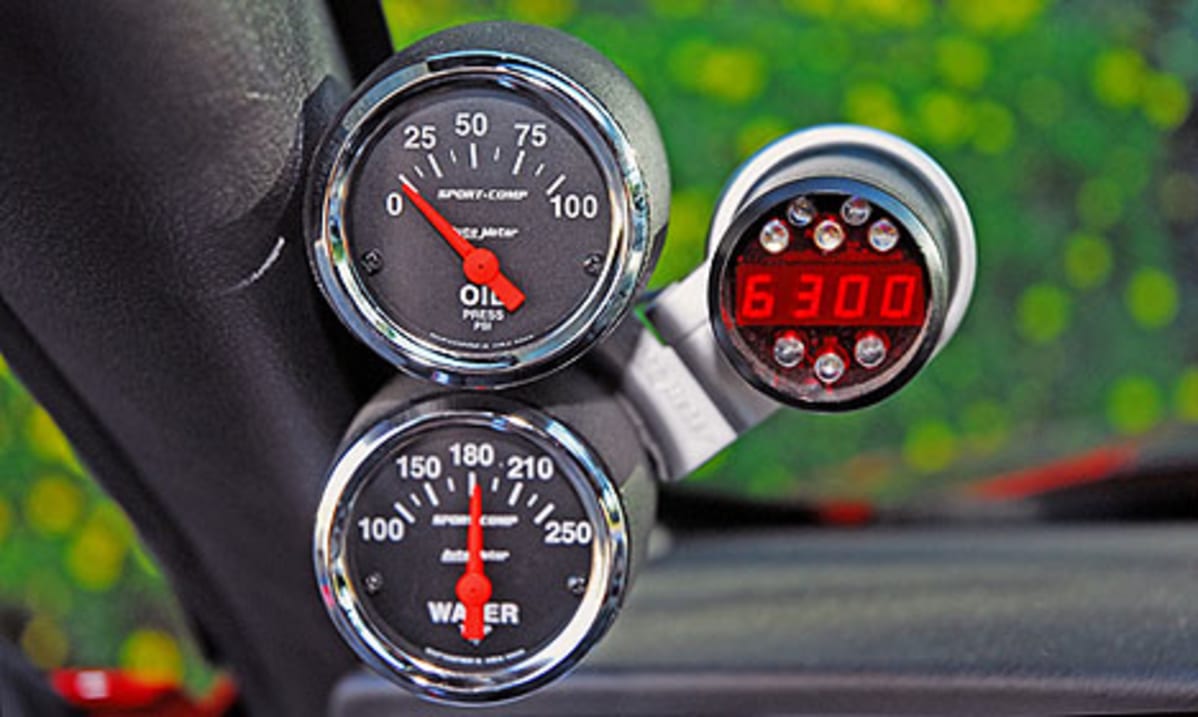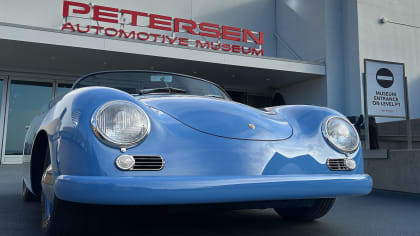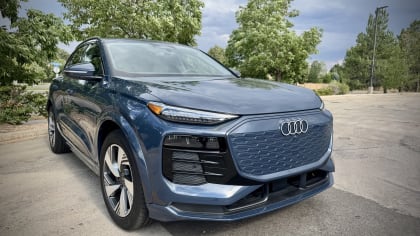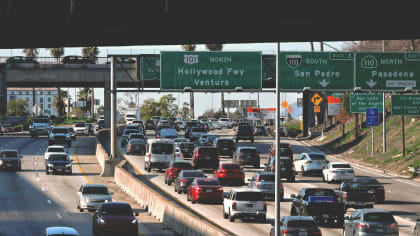WHO'S THE BOSS?
This article is from our archives and has not been updated and integrated with our "new" site yet... Even so, it's still awesome - so keep reading!
Published on Sun, Dec 23, 2007
By: The LACar Editorial Staff
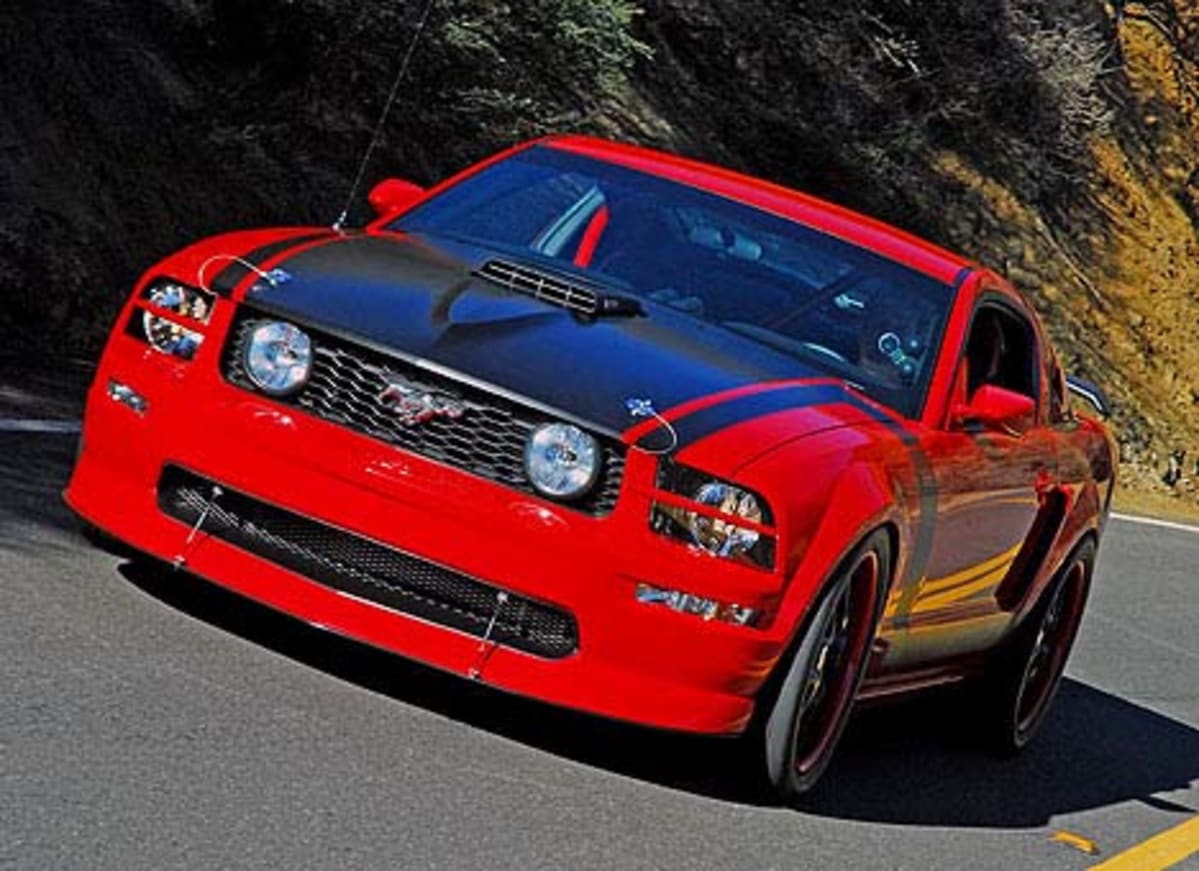
© All photos by Harvey Schwartz
WHO'S THE BOSS?
Galpin Ford in Los Angeles is the largest Ford dealership in America. Each month Galpin sells more than 70 Mustangs to enthusiasts in Southern California and around the world. About 50 percent of these new Mustangs get modifications worth at least $5,000.00. These modifications are ordered through and built by the Galpin Auto Sports (GAS) division. The 10,000 square feet GAS showroom is like being in a mini-SEMA show, with products on display from all of the popular aftermarket manufacturers.
Galpin Auto Sports' Steve Carpenter spent many years racing
motorcycles for several top racing teams. Five years ago it was time to retire
and come down to earth, so to speak, because Steve had a Mustang enthusiast's
dream job of designing and supervising the build up of very high-performing
Mustangs that Galpin's customers want to drive.
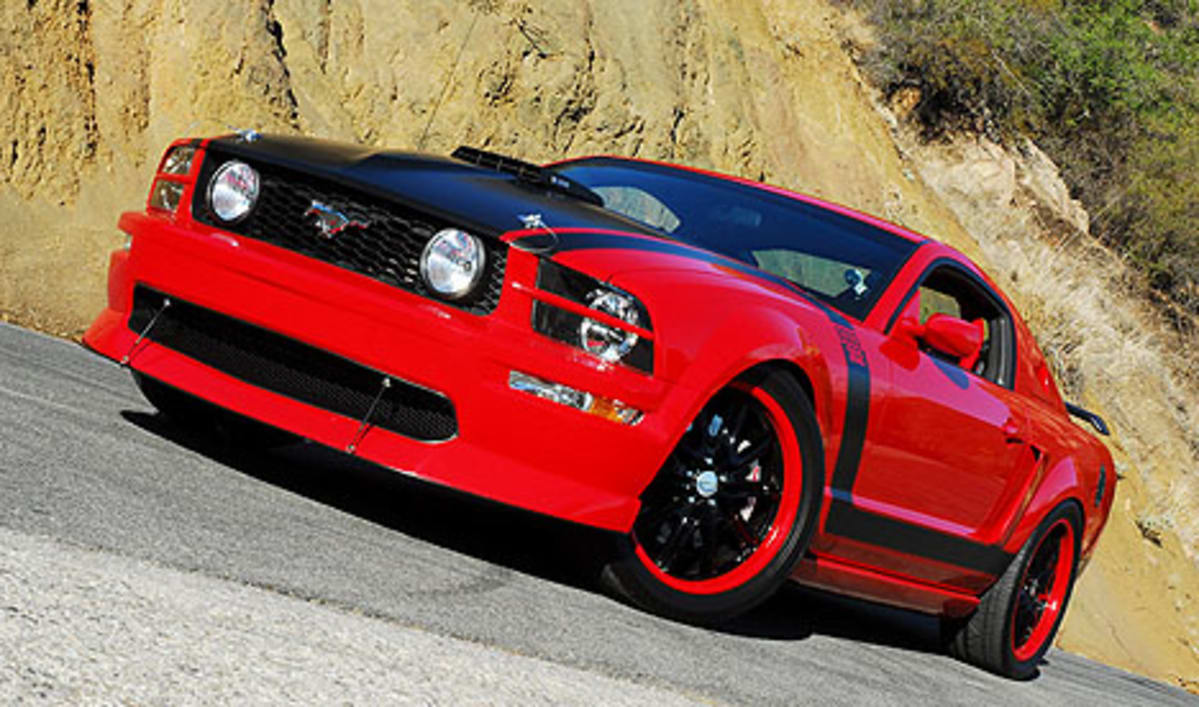
The culmination of Steve's dream is this powerful and thunderous red Boss 302 Mustang coupe you see here.
Steve took a stock Mustang and wanted to make an 'old school' 302 street/road race car out of it. Steve wanted it to be as original to the 1969/1970 Boss 302 as possible, while still retaining the modern Mustang platform. He also wanted the car to be an everyday driver that won't get hot, will run cool, and go very fast in a straight line or around corners - overall, to build the ultimate Mustang and bring back the old-school Boss look. It took six months to complete at a cost of $120,000.00, but it's well worth it. You can't help noticing the hot red paint, thunderous sounds, all backed up with loads of power and performance. "It's like having your own Ferrari/Porsche/BMW but in a Mustang body."
The engine is built by JDM Engineering in Freehold, New
Jersey, and then shipped to Galpin Auto Sports for installation. Starting with
a stock 4.6-liter, three-valve V8, JDM bored it out to 5.0 liters. They then
added an 8-bolt JDM stroker crank, Manley connecting rods, 12.5 JDM/Manley
pistons and rings, Comp Stage 3 camshaft, and C & C ported stainless steel
valves. The intake manifold remained stock with CVC delete plates added. The
fuel injection system also remained stock.
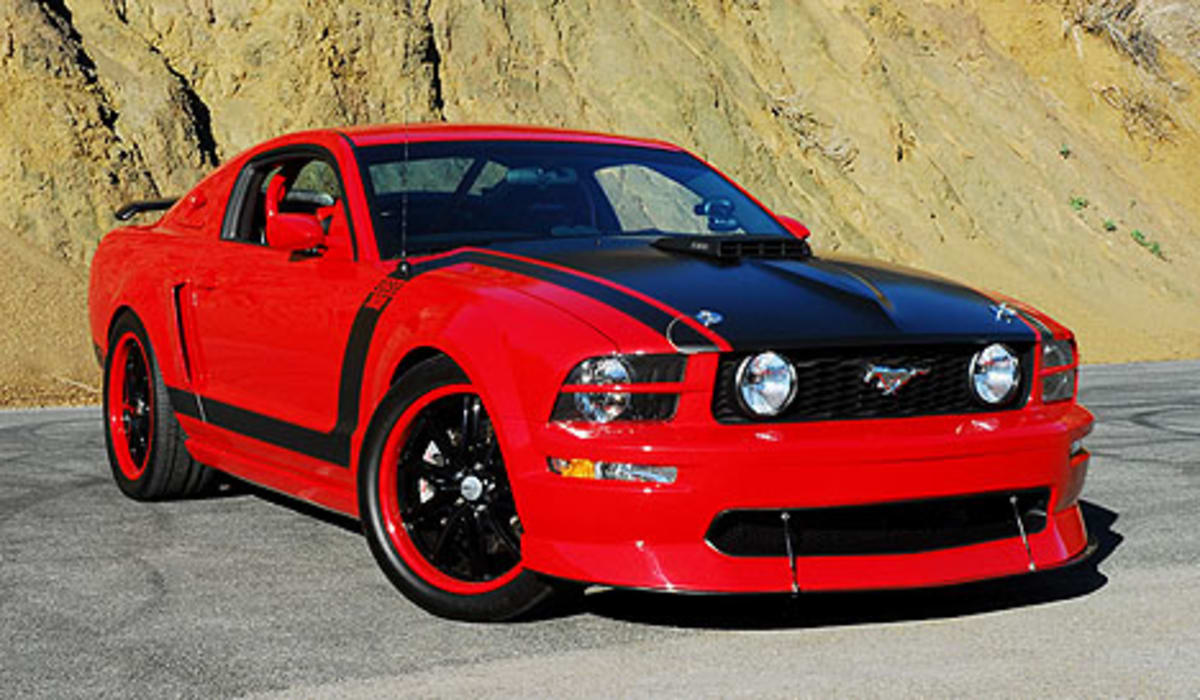
Galpin added Bassani long tube headers attached to Bassani high flow cats with 3-inch wide pipes attached to Bassani mufflers to more efficiently exit the hot gases and give the Boss 302 a thunderous sound. Granatelli coil packs were used to increase the charge and a Cannon Road Race eight-quart oil pan was installed to keep the engine well lubricated. Further enhancing the engine are Steeda under-pulleys, a JDM Cold Air Intake system, and an electric water pump. The NOS nitrous system is from Wilson Manifolds and installed by Galpin. The engine bay of this incredible Boss 302 was signed by Parnelli Jones, Jim DeMora, Axel Chinchilla, Ray Covarrubias, Chris Whitney, and Matt Hoffman.
On the dyno the engine generates 420 horsepower at the rear wheels; then up to 630 horsepower with the NOS nitrous injection system!
Galpin Auto Sports took care of the drivetrain keeping the
T-56 transmission stock, but added a RPS aluminum flywheel and carbon fiber 10.5
clutch with billet aluminum housing. Galpin also installed a custom Hurst
short-throw shifter, a one-piece aluminum JDM driveshaft with 4:10 axle ratio
and an Eaton limited slip differential.
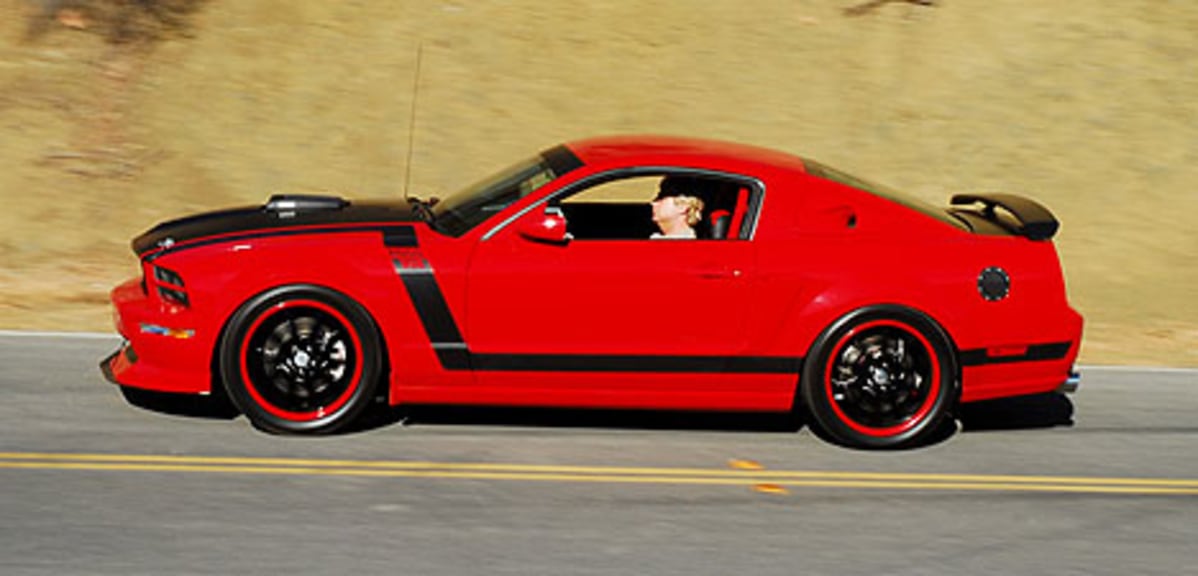
The chassis modifications include a stitch welded frame with Steeda triangle braces.
Up front is a Steeda front sway bar with BMR polyurethane bushings front and rear, Tokico front and rear shocks, Ford Racing billet control arms, Saleen Watts link rear suspension, billet end links for the stock rear sway bar, adjustable K member, and Steeda Competition front and rear springs.
Stronger brakes were needed to bring this road rocket to a quick and safe stop so Galpin choose Baer Brakes 14in. front and rear vented, slotted and drilled brake rotors clamped up front with 4-piston calipers.
Putting the power down on this thundering Boss 302 are big,
20X9in. Boss Eagle two-piece aluminum alloy wheels that are two-toned powder
coated to match the car's paint. These lightweight wheels are wrapped with
sticky Nitto Invo 275/40ZR20in. high-performance tires.
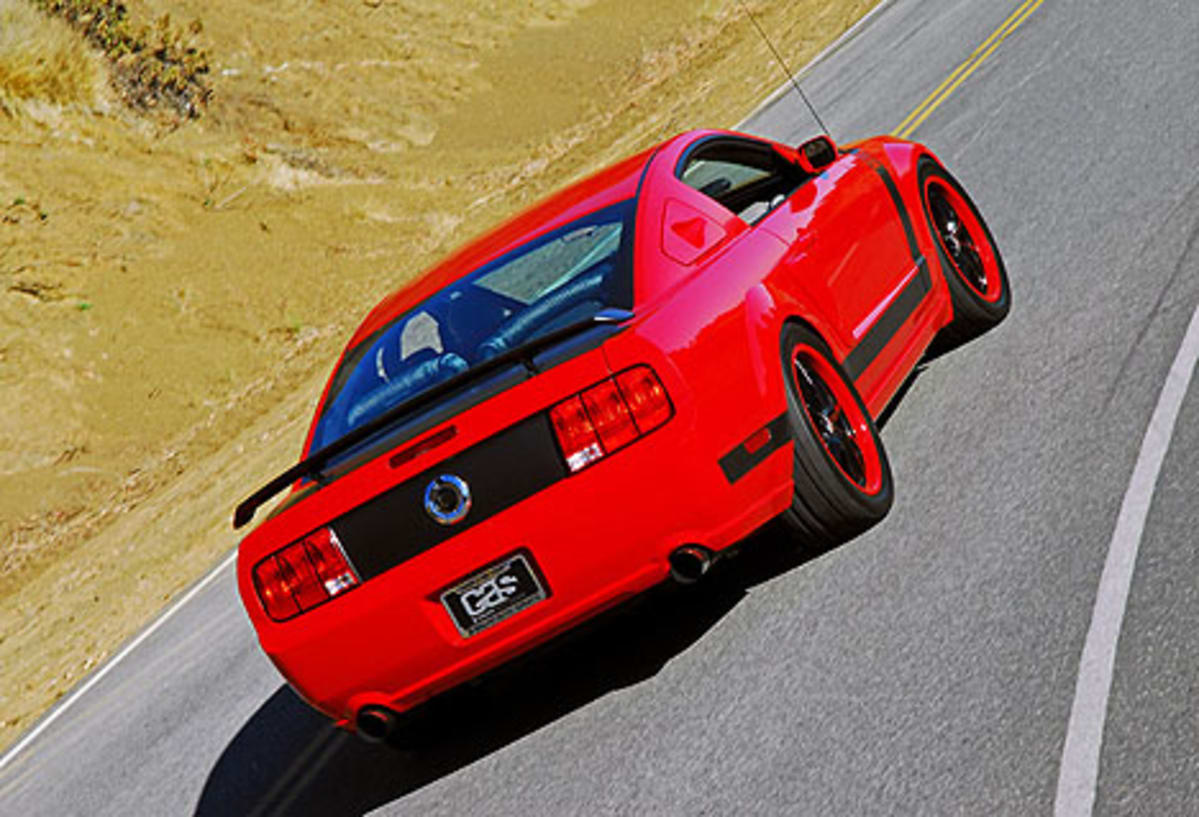
The custom body work was designed by Galpin Auto Sports with M&M Auto Art doing the work. A custom CDC shaker hood was fabricated from a Chip Foose design, and a CDC custom carbon fiber front splitter was attached under the front bumper to increase downforce at high speeds. The rear side windows were modified to channel cool air to the rear brakes using feeder tubes on each side. Then, two holes are drilled on the rear shelf going through the trunk floor to the rotors using a kit from Agent 47. M&M Auto Art used Ferrari Rosso red and flat black paint to give it an 'old school Boss 302 look.
The interior is modified with Cobra custom leather front bucket seats that are cut deep to keep you snug during heavy g-loads. A color-matched Auto Power six-point roll cage is installed for safety. Auxiliary gauges include Steeda gauges on the A-pillar and Autometer gauges located on the center dash. A smaller, custom, hand-made, leather-wrapped MOMO steering wheel was installed and the rubber foot pedals were replaced with Galpin aluminum foot pedals. The Start/Stop buttons and Fire/Arm NOS system was designed and built by Galpin. Real aluminum trim pieces from Galpin were also installed on the center stack and doors to further enhance the sporty looks. The center console storage bin top was upgraded with padded leather for a real custom look and feel.
This Galpin Auto Sports Boss 302 Mustang is a winner. The
unique design and aftermarket build-up makes this 302 Boss Mustang truly amazing
to drive. You really don't want to meet up with this road rocket at a stop light
because it will leave you in the dust with your head shaking and asking yourself
"what just flashed by me?"
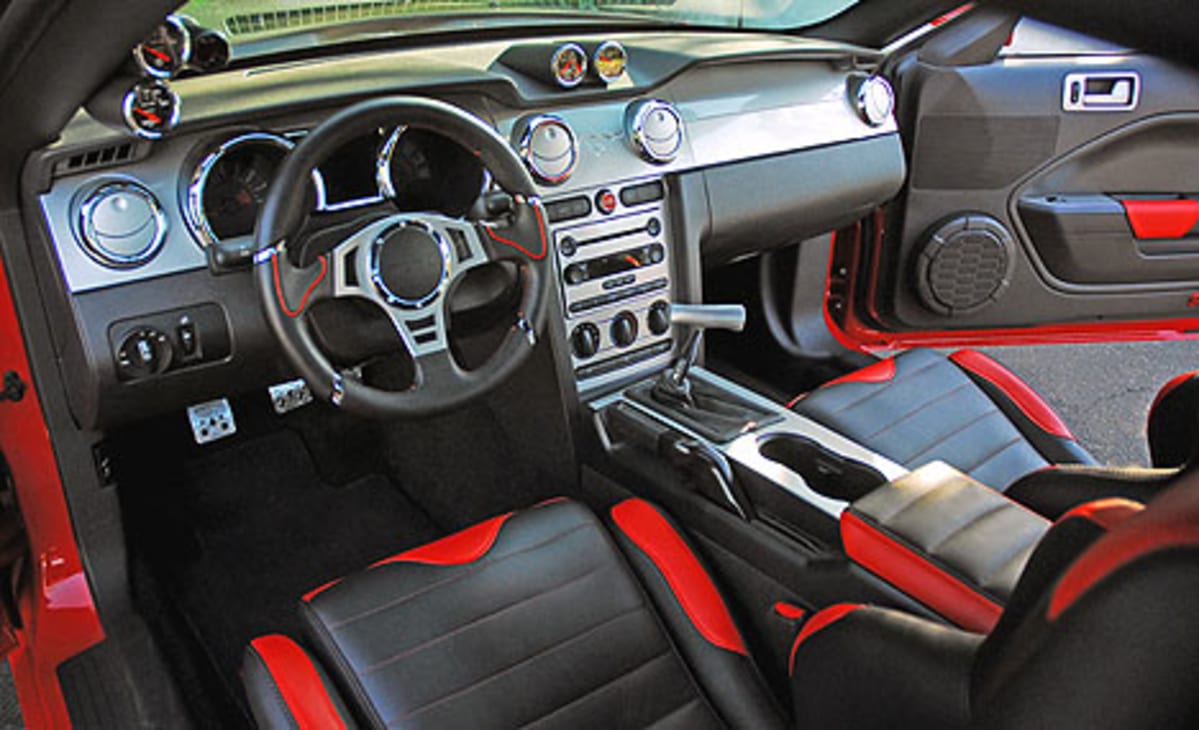
© Words and pictures by Harvey Schwartz
SUMMARY JUDGMENT
The closest thing to the Boss since the original.
For more information about Galpin Auto Sports products, go to
galpinautosports.com.
More photos from Harvey Schwartz can be found at autofotos.com
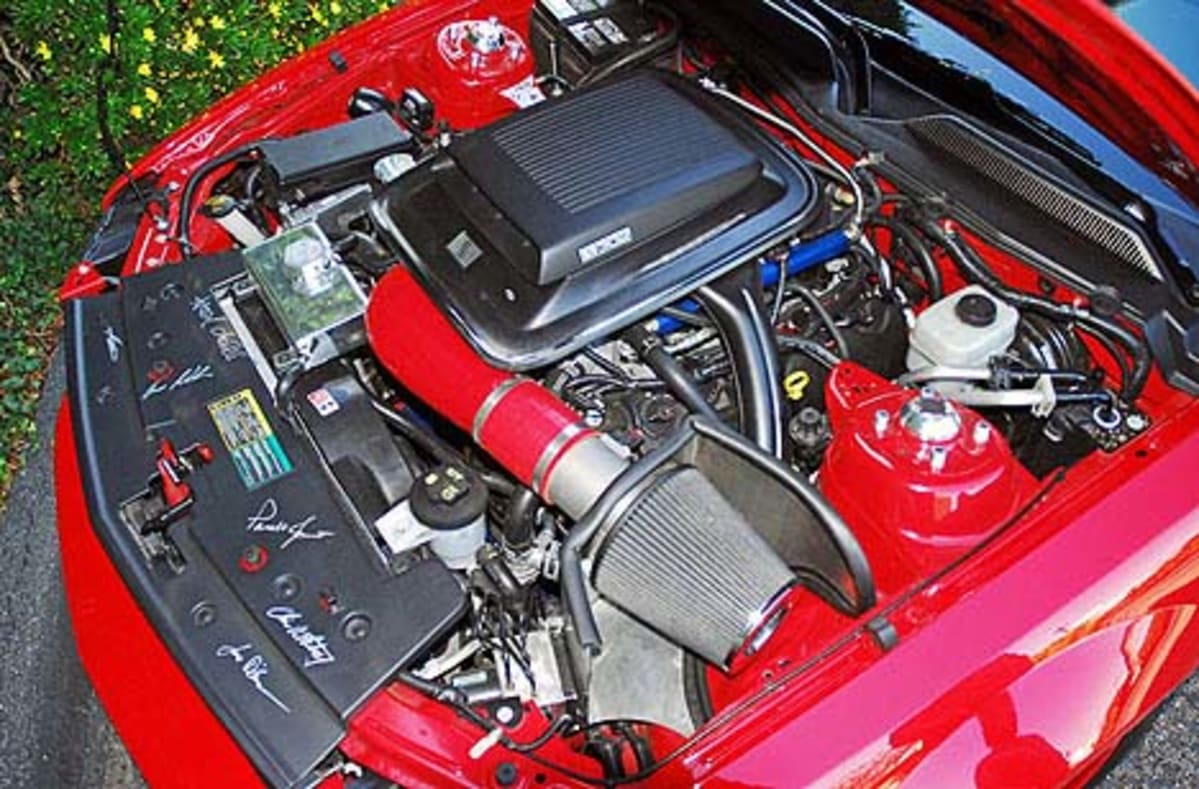
UPDATE & SPECIFICATIONS
While Harvey reviewed a GAS BOSS 302 prototype, Galpin Auto Sports officially unveiled its production 2007 BOSS 302 Mustang by GAS. It features the all-new Ford Racing Performance Parts BOSS 302 high-performance engine in a Grabber blue body. This vehicle marks the first return of the BOSS 302 Engine in a Mustang since 1970. Other features: Original vintage Boss 302 rear wing and Galpin Auto Sports custom shaker hood. The cabin has custom black basket-weave seats with Grabber Blue stitching, a Grant custom retro wood steering wheel, and a GAS custom roll cage. Tech features include an MTX five-channel amplifier, Bluetooth and iPod interfaces, Pioneer AVIC-Z1 head units for the DVD and nav systems, Q Logic kick panels, Streetwires audio accessories and Optima batteries, original Grabber Blue paint by GAS - Roy Nakano Name of production vehicle 2007 BOSS 302 Mustang by GAS Price TBD Engine 390-hp, 5.0 liter BOSS 302 V8 with NOS 1970 Holley carburetor, MSD ignition distributor, coil and plug wires, custom GAS stainless steel long tube headers and merge collectors, Bassani stainless steel muffler and X-pipe EPA mileage rating TBA Transmission & Driving Mechanics Tremec TKO 600 transmission with Hurst T-handle shifter McLeod bell housing and clutch, custom aluminum driveshaft and Ford Racing Performance 456 rear-end gears and axle girdle Brakes Baer brakes with 14" calipers Wheels and Tires MHT "Octane" 20-inch wheels and Pirelli P-Zero Nero tires Dimensions TBA About the Boss 302 Crate Engine
Making its debut in 1969, the original BOSS 302 powered a limited production Mustang model sold for two years, which was known as the BOSS 302. The car got its name from the legendary engine that powered the Mustang to a Sports Car Club of American Trans-Am series win in 1970.
"The original BOSS 302 was a race winning engine. Sharing the DNA from the original BOSS 302, the new BOSS 302 begins with a block designed with racing in mind from the beginning" said Jamie Allison, manager, Ford Racing Performance Group. "Whether racing in a sealed engine class, building an all-out drag racing engine or looking for a street performer, the BOSS 302 block and engine family meets the needs of all Ford 302 enthusiasts at a price that is comparable to a performance-prepped stock 302."
The new Ford Racing Performance Parts BOSS 302 line was conceived because there was an unmet need for engines built from a block stronger than original regular production 302 blocks but more affordable than full race-prepped blocks. The new BOSS 302 engine block features greater strength than most race blocks and offers a street-capable cooling system design, something that race specific blocks tend to sacrifice.
Despite its strength and capability, the new BOSS 302 line is surprisingly affordable because of its high volume production. And since it was designed within Ford Motor Company, the engine also benefits from the improved quality and durability that comes with a production type engine.
"The original BOSS 302 delivered less than 300 hp. Today, enthusiasts are making 500 hp street cars and they need a robust block. Race-specific blocks offer the strength required but cool poorly for street use and are very expensive for the average enthusiast" says Allison.
Built from the all new BOSS 302 block, the BOSS crate
engines feature performance and packaging that accommodate displacements from
302 to 363 cubic inches. Entry level engines feature the Ford Racing GT-40X Xtra
Performance Turbo Swirl aluminum heads to retain stock exhaust locations and are
rated at 340 and 345 hp. Higher performance versions include Ford Racing's
"Z"-head equipped 302 and 347 cubic inch engines rated between 360 and 450 hp,
depending on configuration. The BOSS engine series is capped by a 500 hp 331
cubic inch engine that showcases the capability of the new block by breathing
through all new ported Z-heads.
